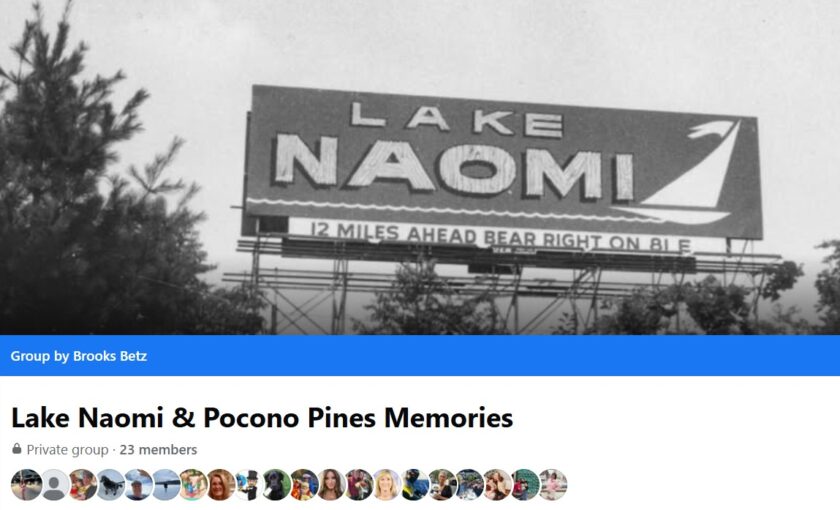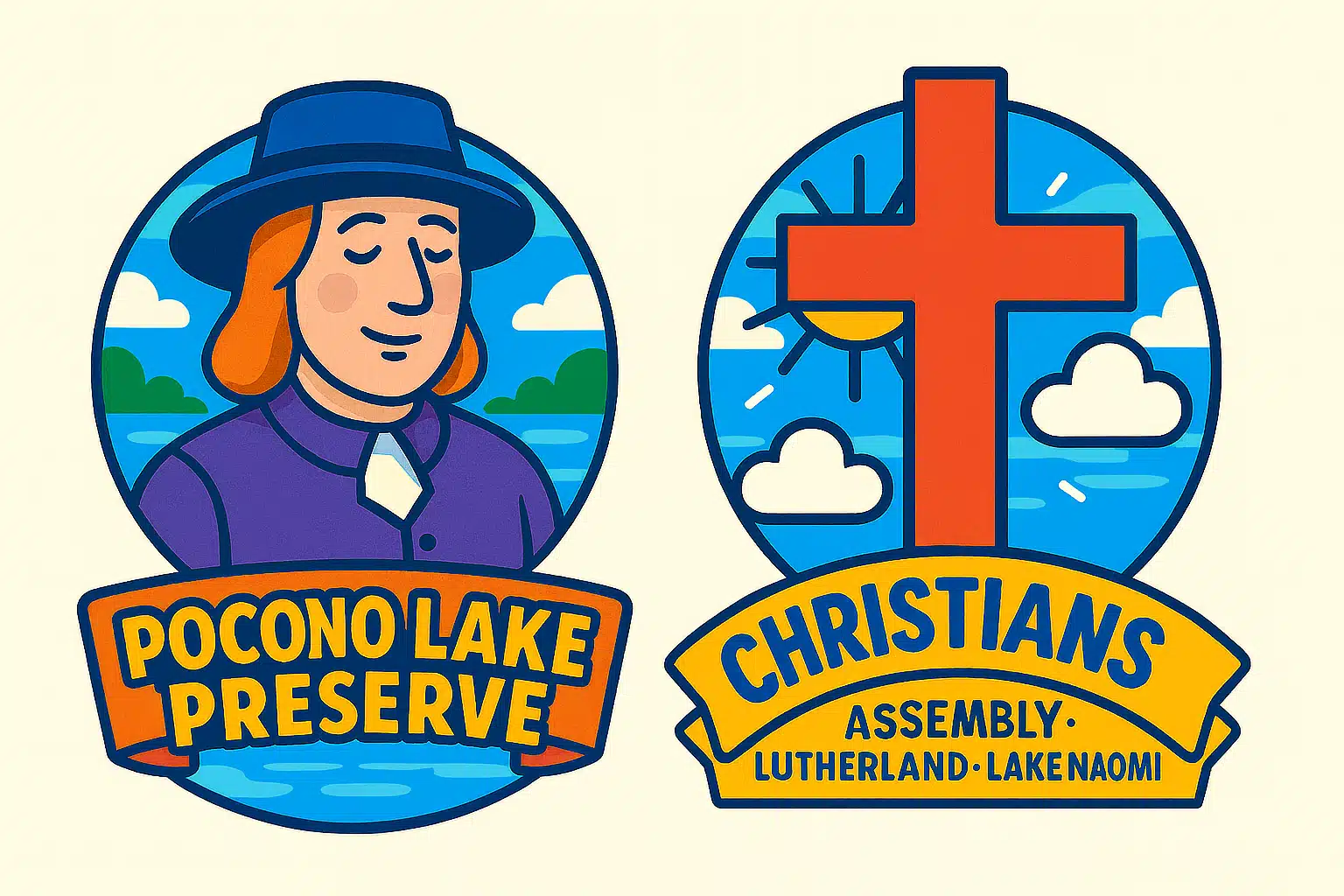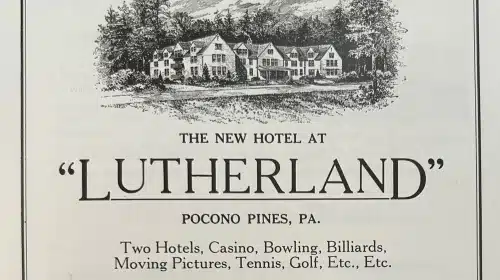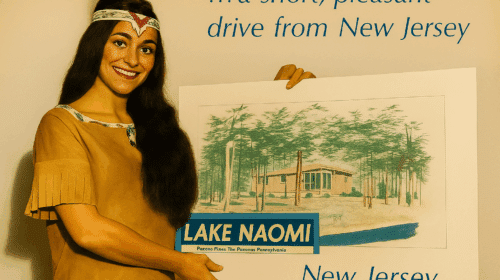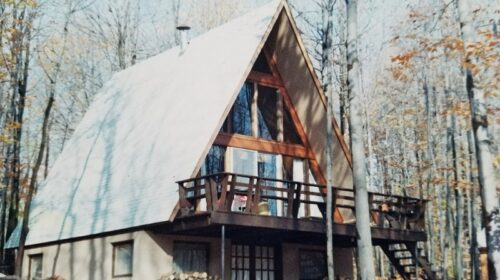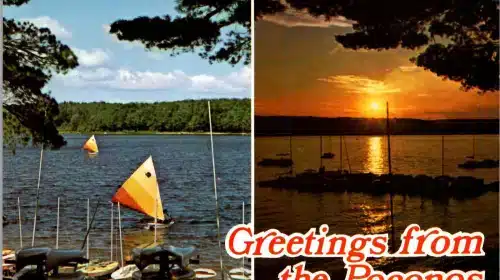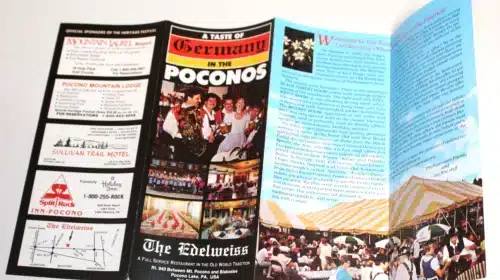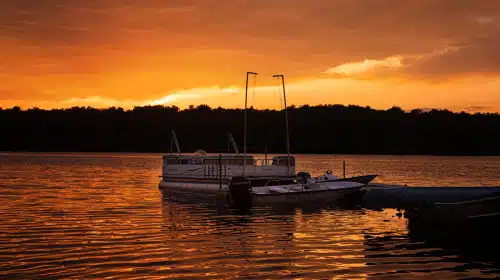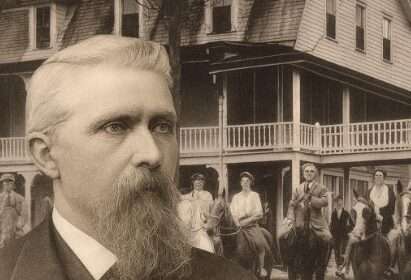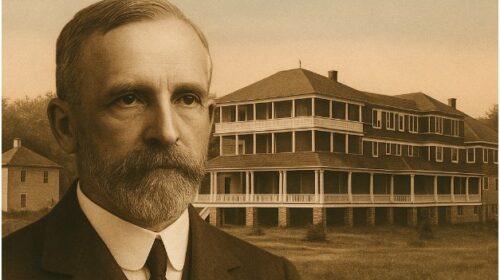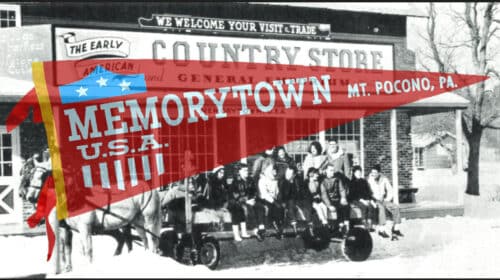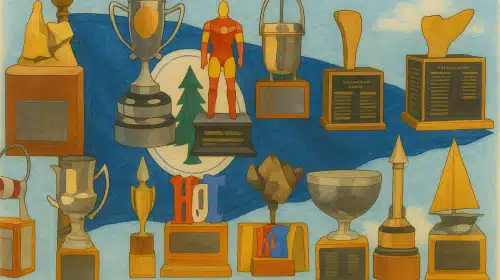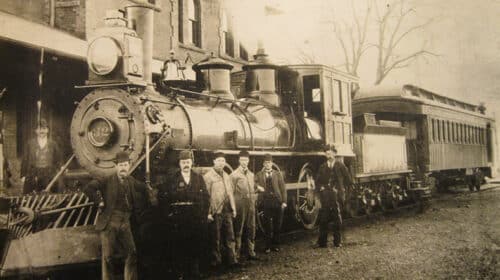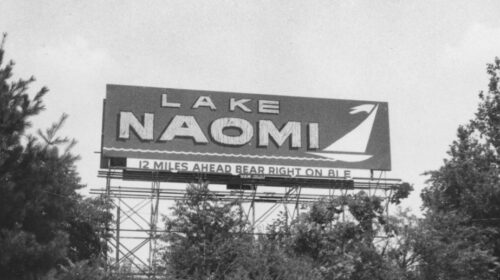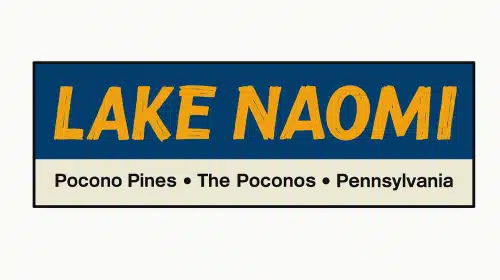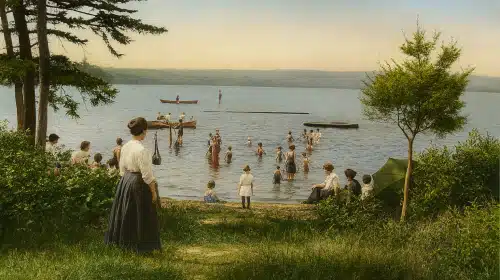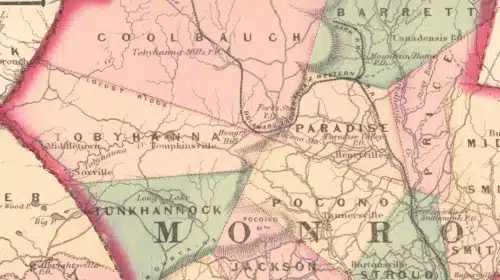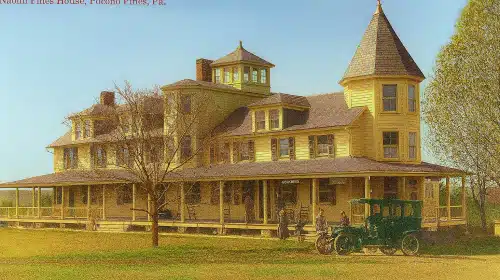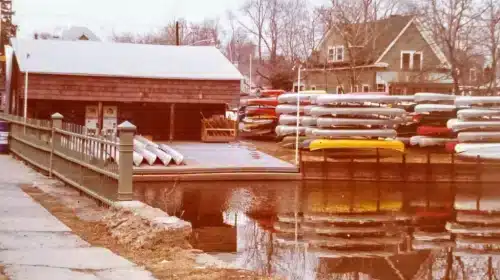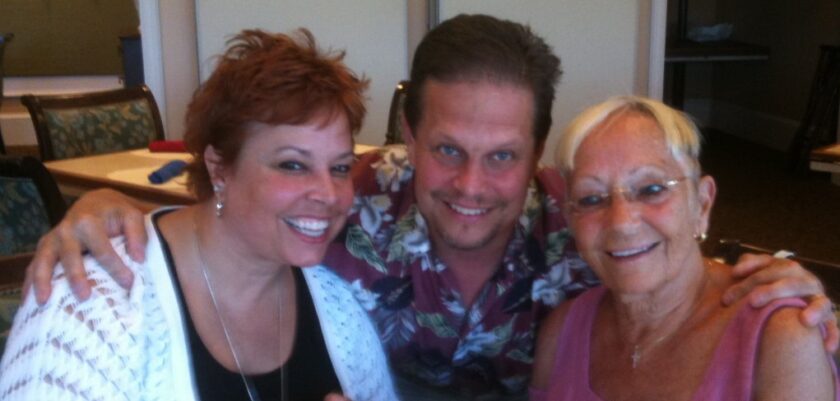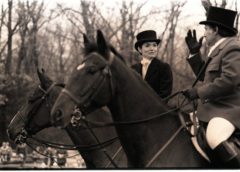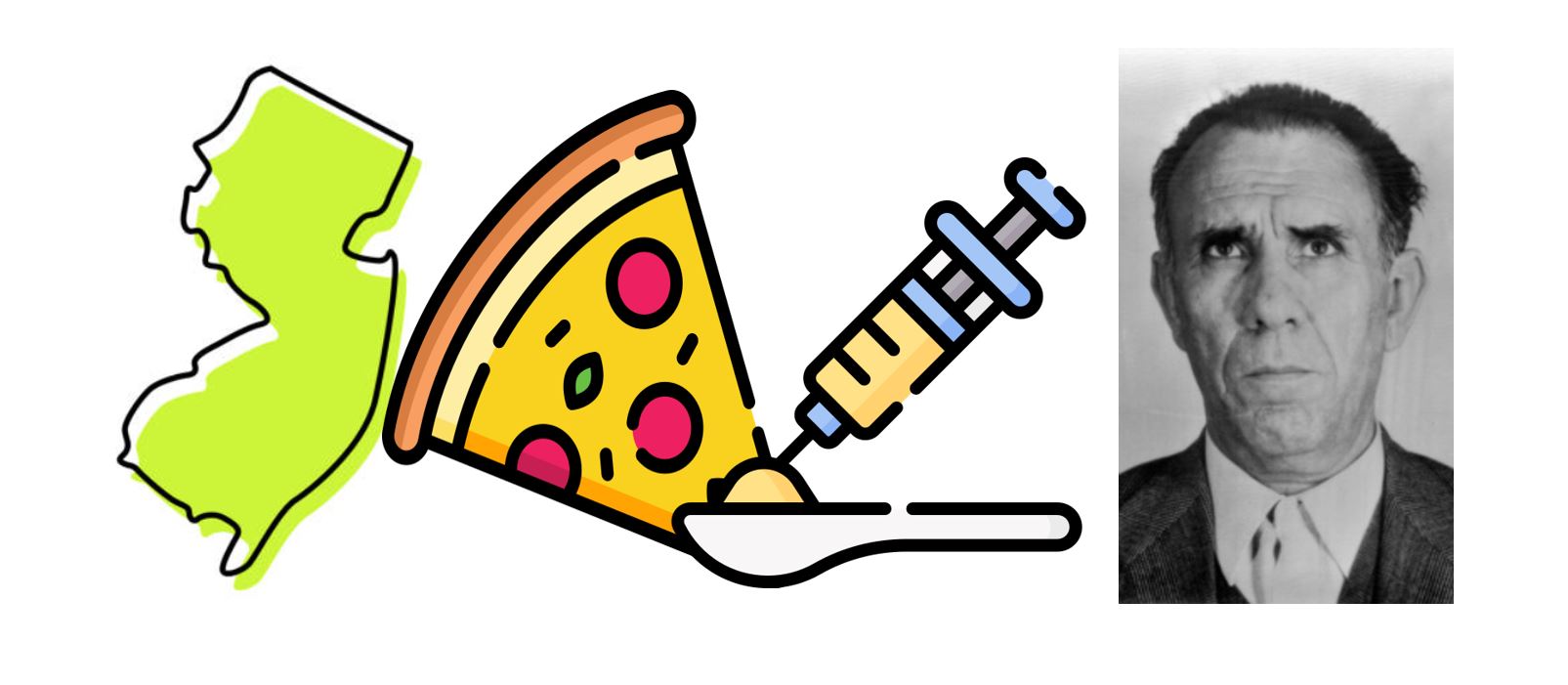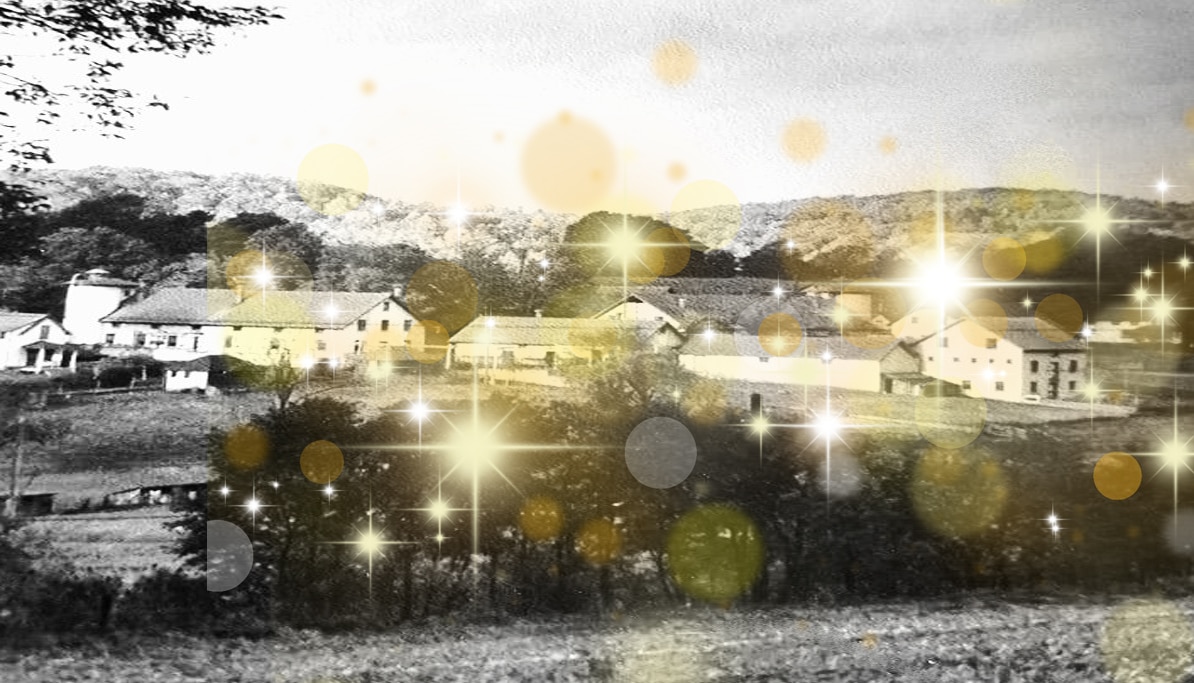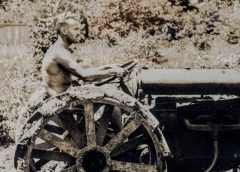Nostalgic & Personal
As a kid, summers at Lake Naomi were my whole world. That’s where I first learned to handle a Sunfish, skimming across the water with the wind in my sail. Just down the road was the Pocono Lake Preserve, a place I’d heard about but never really touched. Their sailors seemed like part of another world, one I never got the chance to compete against. Even so, I always wondered what it would be like if our lakes went toe to toe in a friendly race.

This series I’ve been working on began as an effort to rebuild my youthful memories of growing up on Lake Naomi in the Poconos starting in the 1960s. As the stories came together, I wanted to start an oline dialog with others who might remember or are making their memories right now. We created an associated Facebook Group, called Lake Naomi Memories, for anyone to share their memories that help create a digital history footprint on the web. Oh, and they’ll certainly help me remember as well. Link below – enjoy the series!
Only later did I start pulling at the threads of history, piecing together the story of both communities. What I found was bigger than I expected—a layered past, full of connections I’d never noticed as a kid. If not for these dives into history, I might never have known it at all.
Historical & Reflective
My summers at Lake Naomi were spent learning the ways of the Sunfish, unaware that just across the water, the sailors of the Pocono Lake Preserve carried on their own traditions. Though I knew of the Preserve, I never competed against them, and for years, the two lakes felt like parallel worlds that never quite crossed.
It wasn’t until I began digging into the history that the pieces finally fell into place. Old stories, forgotten details, and the lives of those who built these places unfolded in ways I hadn’t expected. What began as curiosity grew into discovery, and I realized that without these explorations, I would never have uncovered such an intriguing chapter of our shared past.
As I dug into my series about the history of Lake Naomi, I couldn’t help but notice how sailing grew across the Pocono Mountain lakes. At times, I was even invited to race my Sunfish on these lakes like Hemlock, Stillwater, Emerald, Arrowhead, and the Pocono Preserve. History is such an interesting tale, telling how things happened, but since you’re busy living your life, sometimes you miss how different things change over time. I asked a few researchers to help provide some facts about two communities that took entirely different paths throughout history, as well as some of their defining moments.
Join the Facebook Group Lake Naomi and Pocono Pines Memories & History
Start your experience with a live look at the Club Beach at Lake Naomi – Livecam Click Here
North Beach View – Click Here


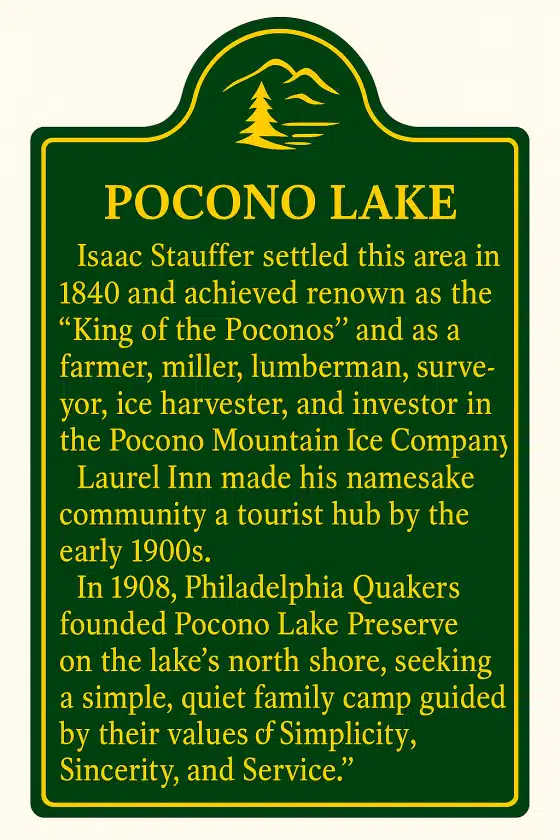
Throughout history, there have been several events where business decisions have significantly impacted the Poconos. First came coal mining, then the lumber industry took hold. When forestry harvesting came to an end, ice harvesting took over in the 1900s. By 1930, however, as technology advanced, what was left? The area’s beauty led to the region’s biggest boom: tourism. However, there was one other event that I can attribute to a single individual, who opened the door to what Pocono Pines and Pocono Lake would become: religious retreats and educational destinations.
Pennsylvania has always had a rich history of religious diversity, so it is not surprising that the Poconos would reflect the diverse communities from which people originated and where they had their primary homes. You even see it today with those from the New York and Philadelphia metro areas. Pocono Pines, under the leadership of Rufus Miller, would represent the Christian faith, while Pocono Lake would represent the Quaker community from the Philly area.
History
If you stand today at the quiet gates of Pocono Lake Preserve, it is hard to imagine that, just a few minutes away in Pocono Pines, a very different religious experiment once thrived. The two communities were born within a few years of each other, yet their paths could not have been more different.

At the Preserve, the story began in 1904 with a handful of Philadelphia Quaker families looking for a rustic escape. They pitched tents on the shores of Pocono Lake, seeking a place to live out their testimonies of simplicity, sincerity, and service. By 1908, they had purchased land, built cottages, and created a gated enclave governed by their own membership. To this day, life at the Preserve is quiet and inward-looking, canoes on the lake, children roaming trails, families gathering on porches, and Sunday worship in a simple, unadorned way. Membership is passed down through generations, and the values of the founders still shape the rhythms of life. The Preserve has never aspired to be a resort. It is, at its heart, a living Quaker village in the woods.



During my research, I came across a mention of several Quakers who stayed at the Naomi Pines Hotel, which I believe was in 1902. Two families, the Joseph Elkinton family and the Redmonds, camped in the “Big Pines” along the south shore of Naomi. The Quaker gentlemen inquired about purchasing the spring and “Big Pines” area. While Frank Miller chose not to sell, he did take them on a tour west in Pocono Lake, which they later purchased, now known as Pocono Manor and the Pocono Lake Preserve on Pocono Lake. Elkinton had strong ties to the Quaker families in Philadelphia and would resurface again.
Meanwhile, in 1902, Rev. Rufus W. Miller, a Presbyterian minister with a vision, organized what he called the Naomi (later Pocono Pines) Assembly and Summer Schools. Inspired by the Chautauqua movement, Miller’s Assembly was bold and outward-facing. He dreamed of a place where religion, education, and culture converged, offering a summer program that featured lectures, music, art, and theology. They built an auditorium, a library, and hotels that could welcome visitors from across the Northeast. For a time, the Assembly drew crowds, and the air around Lake Naomi was alive with speeches, concerts, and Bible classes.
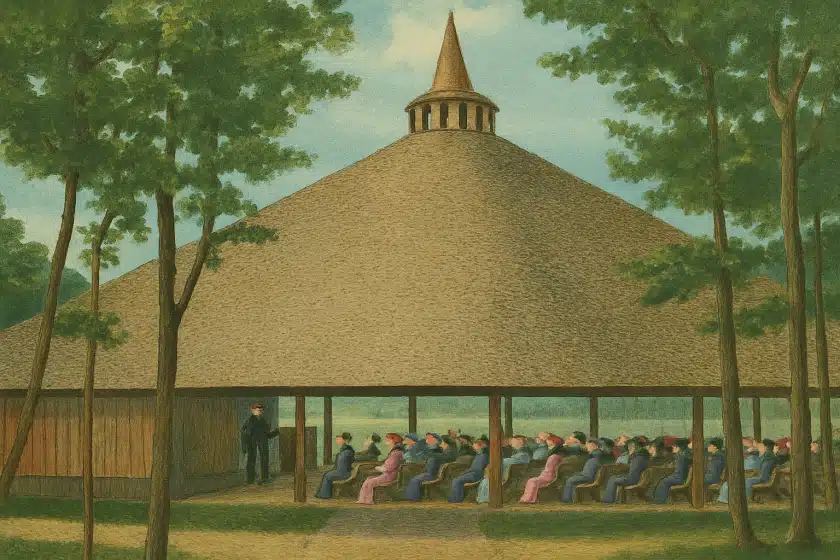

But the Assembly was fragile. By the 1910s, its finances had faltered. The property changed hands, first to Lutherans, who built their own conference center called Lutherland, and later to commercial resort operators. By the mid-20th century, Rufus Miller’s grand vision had faded into memory, its hotels having vanished, its auditorium gone, and its grounds absorbed by other institutions. What survives of the Assembly is mostly photographs, court cases over lake rights, and the faint echo of sermons once delivered under the tall pines.
1908 – Quaker’s Pocono Lake Investment
In the winter of 1908, news spread through the Lehigh Valley and Philadelphia of a remarkable land deal high in the Pocono Mountains. The Pocono Lake Ice Company, long known for harvesting the frozen waters of Pocono Lake, had handed over 3,300 acres of forest, fields, and the lake itself to a new venture called the Pocono Lake Preserve. Though the ice company kept its rights to harvest the winter crop, the rest of the property was destined for something entirely new: a private summer refuge where city families could escape to nature and live what they called the “simple life.”
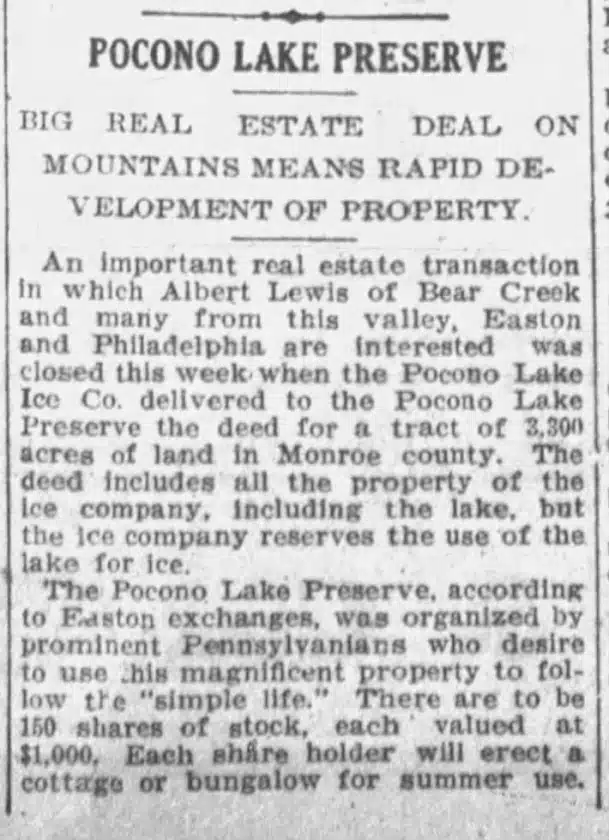
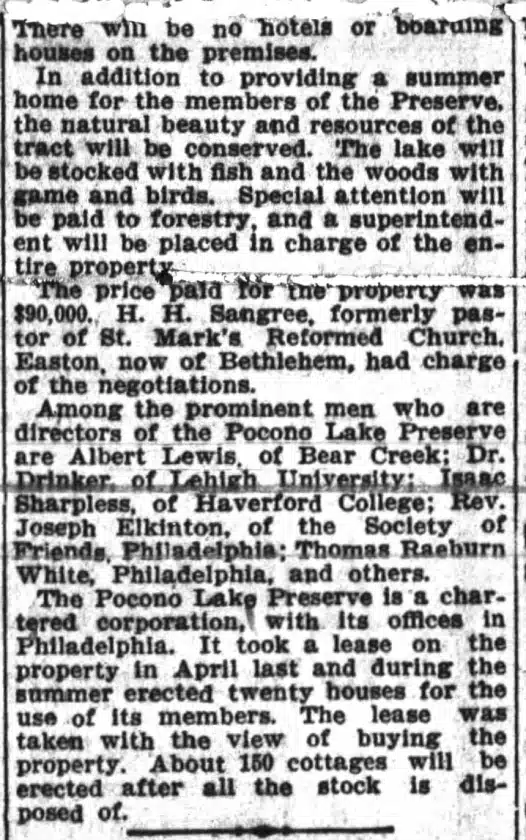
The vision was carefully laid out. No hotels or boarding houses would crowd the land. Instead, shareholders—150 in total, each paying $1,000, would build cottages or bungalows tucked among the trees. The lake would be stocked with fish, the woods would be managed for deer and birds, and the forest would be cared for by a superintendent. Already, by the summer before the deal was finalized, twenty houses had been built under a lease agreement. The directors behind the plan read like a who’s who of Pennsylvania society: Albert Lewis of Bear Creek, Dr. Drinker of Lehigh University, Isaac Sharpless of Haverford College, Quaker leader Joseph Elkinton (told you he’d show up again), and Philadelphia lawyer Thomas Raeburn White. Together, they saw in Pocono Lake not just a property deal, but a retreat that blended conservation, community, and recreation —an experiment in living closer to nature, without the trappings of commercial resorts. Was that a dig at the Miller family? (Just sayin’)
Fast Forward
Fast-forward to today, and the contrast could not be sharper. The Preserve endures, private and intentional, guided by the same Quaker principles that brought its founders north from Philadelphia more than a century ago. The Assembly, by contrast, is gone, its land recycled and its purpose forgotten by most who vacation at Lake Naomi or ski the nearby slopes. And yet, in their own ways, both shaped Pocono history. The Assembly helped put Pocono Pines on the map as a place of culture and religious experiment, even if only for a generation. The Preserve, quieter and less public, became a lasting legacy of faith lived through community.
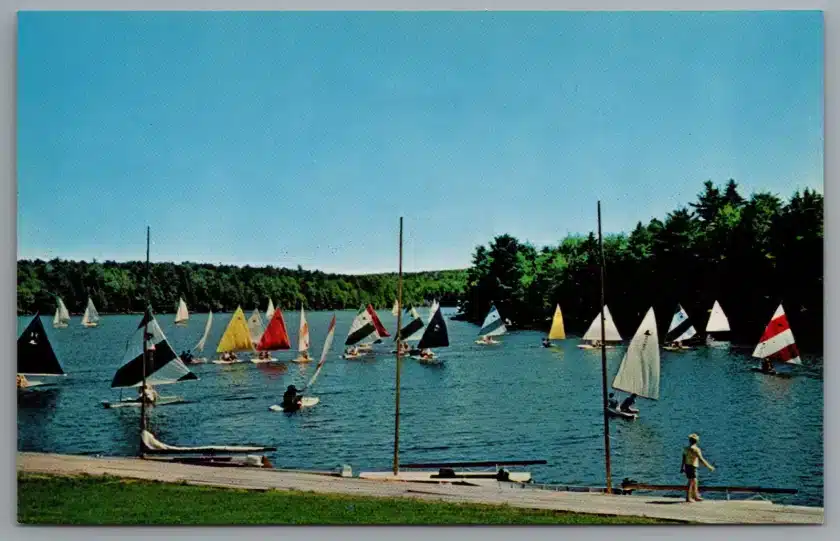
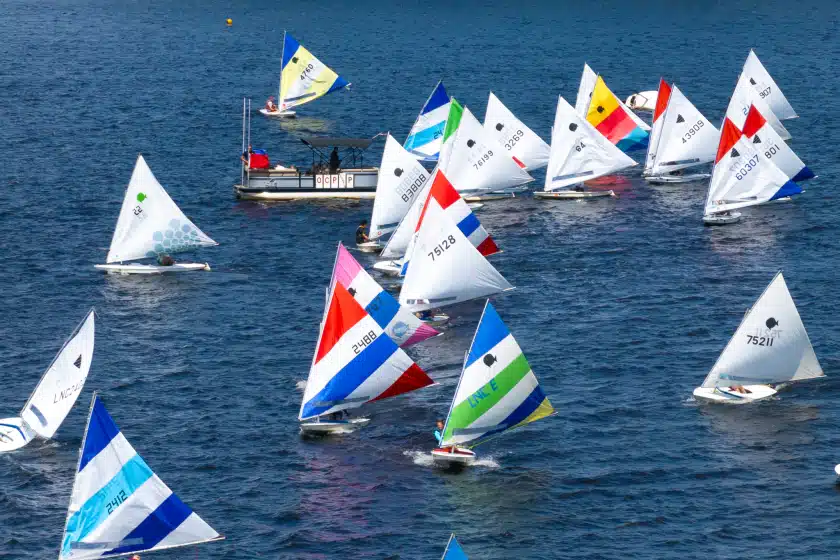
At the Pocono Lake Preserve, membership has always been quite and selective. The Preserve is not a place where you fill out a form or buy your way in. Instead, it is a private, member-owned retreat, with cottages often passed down through families for generations. While the original Preserve families camped out in tents, there are now 140 permanent houses around the lake, although they are still referred to as camps. Each of the camps at the Preserve is owned by a particular family, and many have been passed from one generation to another over the last century. Before you can acquire land, you must have rented for over a two-year period and be unanimously voted in to join the community. Access is limited to members and their invited guests, and there is no public “application” to join. In practice, the only path into the Preserve is through legacy ties or invitation, and the culture remains centered on Quaker ideals of simplicity, community, and stewardship. For outsiders, it is more a tradition inherited than a membership acquired.
Traveling east down Route 940, Lake Naomi Club has evolved into something far more open and structured. Here, joining is straightforward if you own a home inside Lake Naomi or Timber Trails—homeowners are eligible each year to purchase club memberships that unlock access to beaches, pools, sailing, tennis, and the community center. Even those who only rent within the community can apply for a Temporary Membership, provided their stay is at least one week. The process is straightforward and transactional: submit the rental agreement, upload photos for badges, pay the fee, and you’re all set for the summer. Lake Naomi Club has evolved into a resort-style community, blending permanent homeowners with short-term renters, and providing a diverse range of amenities in exchange for dues.

The difference is striking. The Preserve guards its gates, holding tight to a century of continuity and a culture of quiet belonging. Lake Naomi, by contrast, welcomes new members each season through property purchases and vacation rentals, fostering a vibrant and dynamic community with a resort-like appeal. One is a living legacy of invitation and heritage, the other a modern club of access and amenities. Together, they show how two lakefront communities, born in the same landscape, chose very different ways to define what it means to belong.
| Topic | Pocono Lake Preserve (PLP) | Lake Naomi Club (LNC) |
|---|---|---|
| Founding / Ethos | Private Quaker-founded summer community (1904). Motto: “Simplicity, Sincerity and Service.” | Private, year-round recreational club community with a resort-style mission. |
| Who can join / eligibility | Very private; membership centered on property owners and their families/guests; specifics handled directly by PLP. | Membership offered to property owners in Lake Naomi & Timber Trails; single/couple options; Temporary memberships available for renters/guests. |
| Requirements to join (high level) | By invitation/approval; Rental required for first two years. Unanimous community vote (approval). | Application plus annual dues; new-member fees and categories publicly listed each season. |
| Dues/Fees (public info) | Not publicly posted | Dues, new-member fees, and categories are published by the club. |
| Governance | Traditions reflect Quaker practices (e.g., Meeting in a worship grove). | Club/association with bylaws and a board/trustees structure. |
| Roads | Unpaved roads; intentionally rustic, low-infrastructure atmosphere. | A Modern resort feel; year-round facilities and programming. |
| Lake & Boating Rules | Quiet-water emphasis; small-engine limits and low-impact boating; no public race calendar. | Non-motorized boating on the lakes (sail, paddle, row); marinas and storage provided. |
| Sailing focus (competitive vs. leisure) | Leisure-oriented. Casual sailing and paddling; no advertised formal regatta program. | Competitive & instructional. Active sailing club with weekend races, junior sailing school, and annual regattas/invitationals. |
| Core Activities / Traditions | Quaker Meeting on Sundays, Friday night square dances, hiking, nature programs, lake swimming/boating. | Sailing, paddling, seven beaches across multiple lakes/ponds, pools, tennis/pickleball, golf (Timber Trails), fitness center, youth camps, classes, and social events. |
| Amenities (highlights) | Trails, preserves, lake access, community gathering spaces; low infrastructure by design. Tennis & pickleball courts. | Large community center (indoor pool/fitness/courts), two outdoor pool complexes, 18+ tennis courts, dining at clubhouses, marinas, beaches, and activity programs. |
| Access for non-owners | Not publicly promoted; the community is notably private. | Temporary memberships are available for qualified renters/guests; lodging partners may include access. |
Final Thoughts
If you’ve read some of my other stories about the area’s history, you might have thought this story was a competitive comparison about the Pocono Lakes, specifically the Isaac Stauffer vs. the Miller family feud at Lake Naomi. History remembers that one cut down forests and dammed a creek to create a lake, while the other dammed the same creek, created another lake, and then took a religious and tourism turn. The fact is that Stauffer and the Pocono Lake Ice Company sold to several Quaker families (1908), and the Millers sold to Logan Steele (1963). The Pocono Lake Preserve vision remained the same, while the Lake Naomi community evolved into a different model. It is a reminder that two visions, born in the same place and time, can leave very different marks: one as a story now told, the other as a story growing as the community grows and requires different things.
Timeline and Historical Notes
- 1882 — Thomas Thompson Miller (Easton) starts buying land he calls “Naomi Pines.” This becomes the stage on which the Assembly and later resorts rise.
- 1888 — Franklin Comfort (“Frank C.”) Miller opens the Naomi Pines House resort near the Naomi Pines Spring, jump-starting summer tourism in the village (then “Naomi Pines”).
- 1895 — The Miller brothers (Frank C. and Rev. Rufus W. Miller) help organize the Pocono Spring Water Ice Company, build a 14-foot high / 100-foot spilloff dam on Tunkhannock Creek, and create Lake Naomi with long, exclusive water-use rights; they also run bathing/boating together.
- 1900 – Around this time, a similar dam that the Millers built at Naomi, the Pocono Lake Ice Company constructed a dam downstream on the Tobyhanna and Upper Tuckhannock Creeks, enlarging the Pocono Lake.
- 1901–1902 — Rev. Rufus W. Miller (Presbyterian) founds the Naomi Pines Assembly & Summer Schools (a Chautauqua-style, non-denominational program) on ~300 acres; its first season opens with the Pocono Pines Inn, Blakeslee Hall, and an auditorium overlooking Lake Naomi.
- 1903–1904 — Early Assembly growth brings hotels, a library, and 8-week summer schools; meanwhile, Quaker families from Philadelphia begin camping at Pocono Lake, laying foundations for Pocono Lake Preserve (PLP) and its motto “Simplicity, Sincerity, Service.”
- 1904 (Sept. 3) — Frank C. & Katherine D. Miller donate shore land to the Pocono Pines Assembly & Summer Schools—a typical instance of Assembly-adjacent philanthropy in the Miller era.
- 1908 — The Quaker group (which included Haverford College president Isaac Sharpless and families) buys the Pocono Lake tract from the Pocono Mountain Ice Company and formalizes Pocono Lake Preserve as a rustic campground community.Early visitors such as Elliston Perot Morris Jr., Wilbur Wilford, Esther White, Elizabeth Jones, and “Miss Avery.”
- 1916 — The Pocono Pines Casino (Assembly cultural hall) is built for plays, concerts, and lectures; this property later passes to the Lutherans.
- 1920 (Aug. 8) — Local Catholics dedicate Our Lady of the Lake in Pocono Pines; dedication by Bishop Michael J. Hoban (Scranton) with Rev. P. J. Boland (Mount Pocono) and parishioners.
- 1923–1926 — The Lutheran Conference & Camp Association (Missouri Synod) assembles more than 1,300 acres and launches Lutherland (Christian conference/camp). The 1916 Casino and surrounding tracts were transferred to the Lutherans in 1926.
- 1930s–1950s (after Assembly finances fade) — Lutherland property is commercialized as Pocono Crest; later, Valparaiso University (IN) assumes control in the late 1950s. (Local libraries preserve Lutherland images.)
- 1938 (June 30) — PA Supreme Court decision Miller v. Lutheran Conference & Camp Ass’n (331 Pa. 241) clarifies divisible easements in gross over Lake Naomi; the opinion recounts how Frank C. and Rufus W. Miller shared/assigned boating-bathing-fishing rights as separate interests.
- 1949 — The landmark Naomi Pines House burns; villagers mark the end of the original Miller-era hotel.
- 1963 — Logan B. Steele and partners purchase ~2,600–2,760 acres encircling Lake Naomi, seeding today’s Lake Naomi Club community
- 1973 – Timber Trails community opens alongside the Lake Naomi Community
- 2007 – The Logan Steele Community Center, opened Memorial Day weekend 2007, is a private year-round facility for Lake Naomi and Timber Trails members offering an Olympic-size indoor pool with whirlpool, sauna, steam room, hot tub, and splash pool; a full fitness center with cardio, weights, and group exercise; indoor tennis courts and multi-purpose courts; activity spaces including art, game, teen, meeting, and quiet/library rooms; a café, locker rooms, and Wi-Fi; plus outdoor amenities such as a pavilion, sports fields, playground, sand volleyball, walking/jogging paths, cross-country ski trails, platform tennis, and a dog park
- 2009 — Parish realignment: St. Maximilian Kolbe Parish (successor to Our Lady of the Lake) begins worship in Pocono Pines.
My Series Honoring the History of Lake Naomi & the Pocono Pines Area
About The Author
I decided to write these stories down because a friend of mine, with whom I grew up, now lives on Lake Naomi and still sends me photos of the Lake Naomi Club trophy case, where my name, along with my father’s and brothers’, lives on (Thanks, Sue). Thank you for allowing me to document this life experience for the record.
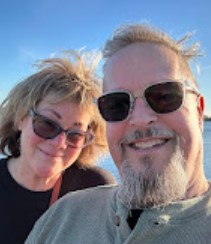
Brooks founded Mr. Local History and the Mr. Local History Project along with his wife, Jill. Born in Plainfield, New Jersey, and raised in Westfield, Brooks graduated from Westfield High School in 1980 and later from Bryant University. For over two decades, Brooks, along with his brother Brian and younger sister Cee Cee, spent their summers on Lake Naomi with their parents, Frank and Caryolyn Betz, who had lived on Canoe Brook Road since the mid-1960s.
He and his family owned the Pocono Boathouse (Pocono Pines, PA) and the Cranford Canoe Club in the 1960s through the 1990s.
There are likely many gaps in the history that I hope to fill, along with a return visit to Lake Naomi to reminisce and reflect on these stories. This story is part of a series dedicated to the history of Lake Naomi, Pocono Pines, and the memories of my family spending time together. Thanks for reading.
